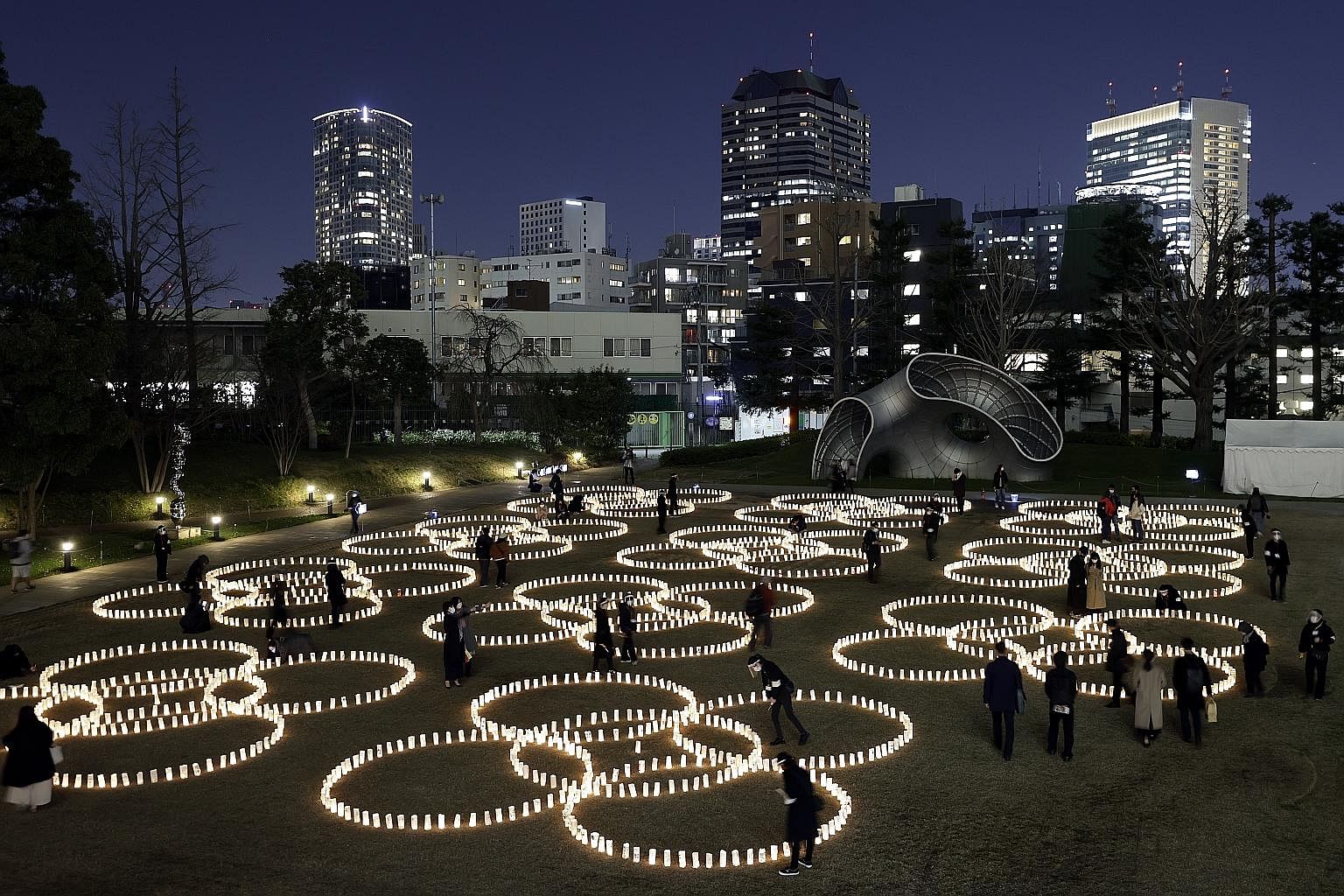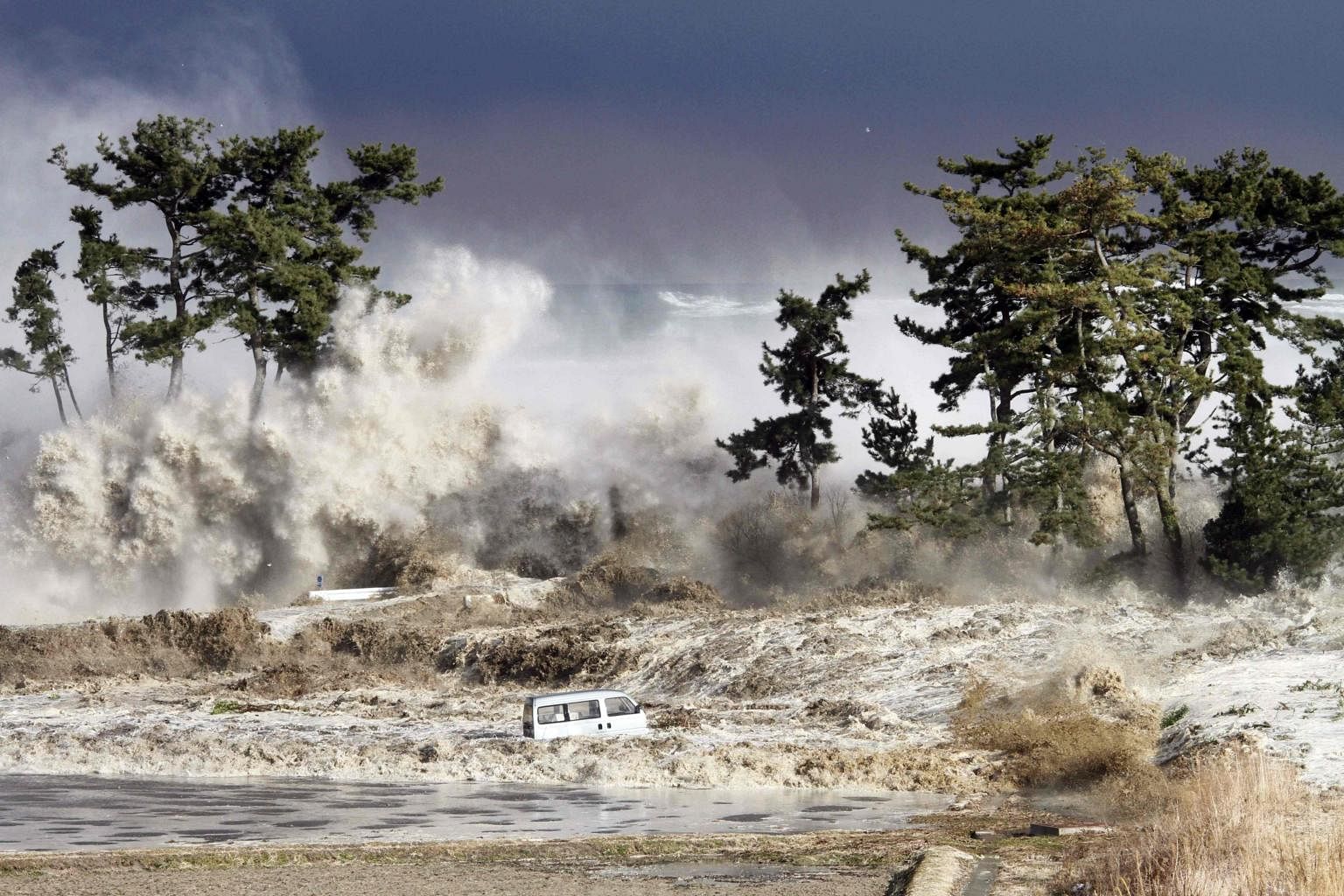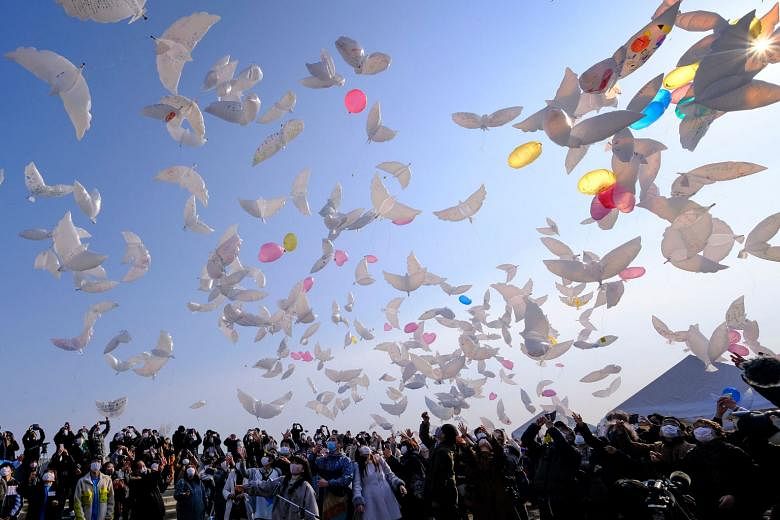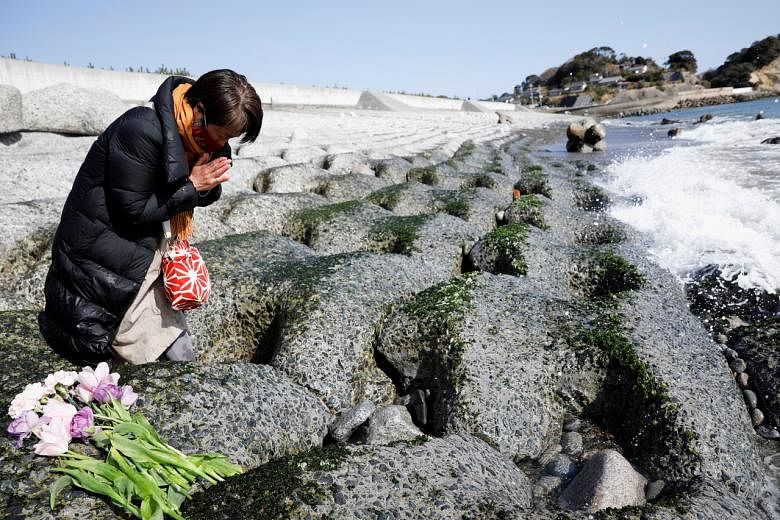TOKYO - Millions of Japanese, hands clasped and heads bowed in prayer as some blinked away tears, stopped what they were doing at 2.46pm on Thursday (March 11) for a minute of silence to mark 10 years to the precise moment a massive earthquake struck Japan, destroying the lives of thousands and setting off a tragic chain of events.
Disaster sirens sounded in the hard-hit Fukushima, Miyagi and Iwate prefectures. In Tokyo, people stopped in their tracks in bustling Ginza and Shinjuku to pay tribute to the 22,000 people who died or are still missing.
It was a moment of national solidarity, coming as wounds remain raw in spite of the ebb of time.
On March 11, 2011, the strongest earthquake in Japanese history, with a magnitude of 9.0, triggered a tsunami that reached a height of over 30m in some areas.
The monster waves also engulfed the Fukushima Daiichi nuclear power plant, causing reactor meltdowns in what was one of the world's worst nuclear accidents.
The impact of the disaster continues to be felt. Over 40,000 people remain displaced, while the decommissioning process of the nuclear plant has been troubled.
Mr Makoto Saito, 50, whose five-year-old son Shota died in the disaster, told a memorial ceremony in Tokyo that while reconstruction efforts have progressed steadily, the pain is still fresh.
"The recovery of the hearts of the bereaved have not progressed the way they would want due to overwhelming sadness," the elementary school teacher from Fukushima said.
"If Shota were still alive, he would now be in his third year of junior high school. I deeply regret I can't give him advice for the future."

Emperor Naruhito said at the same ceremony it was important to "heal the emotional scars of those affected, including the elderly and children, and to monitor their physical and mental health".
He added: "I feel pained thinking about those who are struggling because their living environment has changed completely, whether through the loss of family or close friends, the loss of their homes and jobs, or because they are cut off from their communities."
The government has spent 31.3 trillion yen (S$387 billion) over the last 10 years on restoration, including the clearing of rubble and the building of roads, buildings and fishing ports.
But Reconstruction Minister Katsuei Hirasawa, who took over the job in September, acknowledged that the plan has not taken enough account of the human cost.
He vowed to do more in the second phase of reconstruction, starting next month, with a budget of 1.6 trillion yen over five years.

Prime Minister Yoshihide Suga vowed on Thursday (March 11) to provide seamless support, including by improving living conditions for people to return home, and promoting the revitalisation of industries.
Tributes also poured in from abroad. United Nations Secretary-General Antonio Guterres, United States President Joe Biden, pop star Lady Gaga, and Apple chief executive Tim Cook were among those who offered their condolences and praised Japan's resilience.
Mayor Futoshi Toba of Rikuzentakata city in Iwate prefecture, which has lost 23 per cent of its population since 2011, told The Straits Times that infrastructure building is 90 per cent complete.
"But it is impossible to say that we have achieved 'recovery' only with the completion of construction projects," he said. "We must think of how to create jobs and revive industries, though Covid-19 presents an extra challenge."
Japan hopes to invoke the power of sport to showcase to the world the recovery of the hardest-hit regions over the past 10 years, as well as uplift a world suffering from the coronavirus pandemic.
The torch relay for what is billed the Reconstruction Olympics is set to flag off on March 25, from the J-Village sports complex in the town of Naraha in Fukushima.
Two-time figure skating Olympic champion Yuzuru Hanyu, 26, who was born in Miyagi and once thought of hanging up his skates after the disaster, said there are some wounds that can never be healed.
"But over these 10 years, I've come to understand the true power of the phrase ganbatte (do your best)," he said, of turning adversity into strength. "Everyone, please do your best. I will, too."



